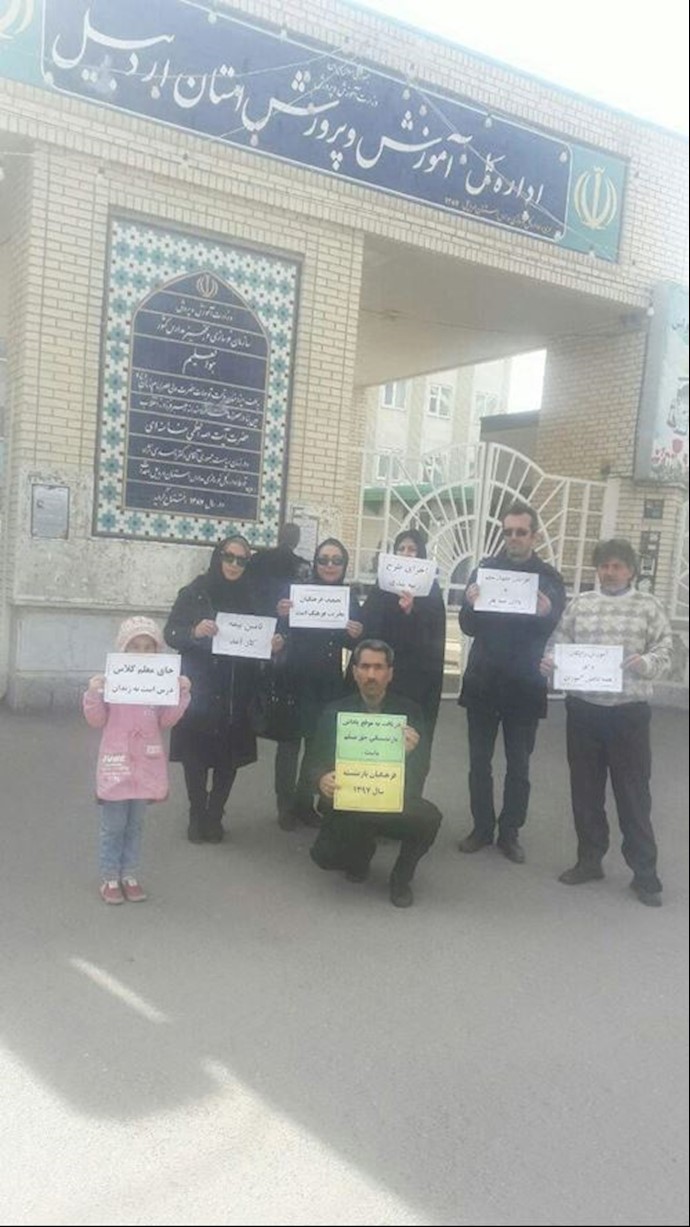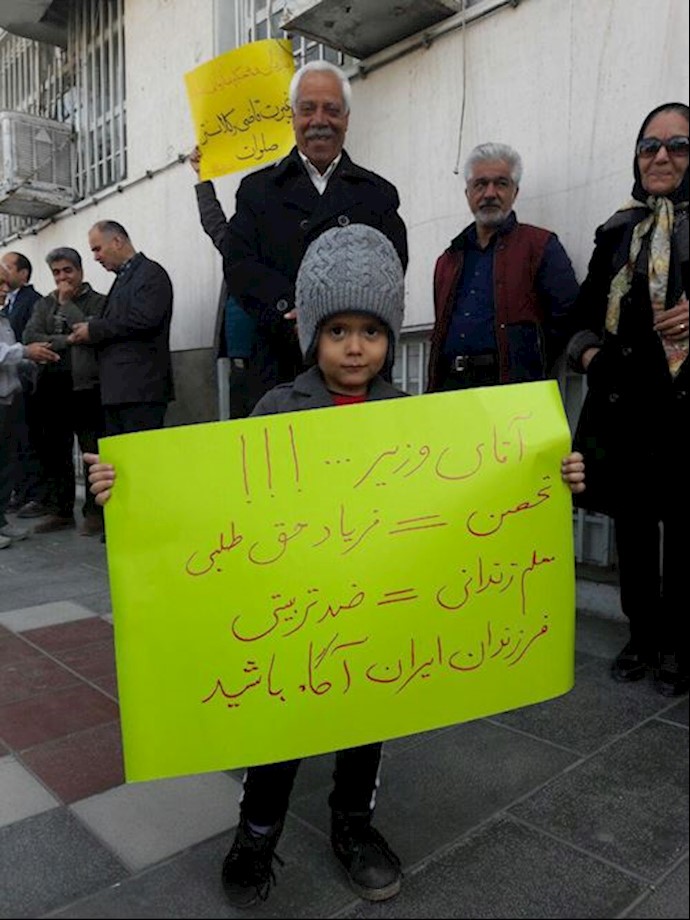Reported by PMOI/MEK
Iran, March 7, 2019 – Teachers and educators in numerous cities across responded to a call for rallies across the country, protesting poor living conditions, low paychecks and pensions, and authorities intensifying security measures on campuses and school grounds. Another demand constantly raised by the teachers is the release of their colleagues who have been unjustly jailed by the authorities.
Protesting teachers held demonstrations in front of offices of the education ministry in several cities, including Shiraz, Mashhad, Qazvin, Kermanshah, Urmia and Ardebil.

Teachers rally in Ardabil, northwest Iran – March 7, 2019
Teachers and many people from all walks of life across Iran are protesting poor living conditions along with low and/or delayed paychecks. Thursday’s rallies comes on the heel of a three-day nationwide sit-in that took place earlier this week, Sunday through Tuesday.

Teachers rally in Urmia, northwest Iran – March 7, 2019
The three-day sit-ins were the third nationwide protest movement by Iranian teachers. In the past year, teachers have been constantly protesting against poor economic conditions and the suppression of their most basic rights and freedoms by the Iranian regime and its security forces. As the Iranian regime’s parliament (Majlis) is discussing the budget for the upcoming Persian year, protests by government employees and public sector workers as well as retirees are escalating. The protesters are demanding the readjustment of the government budget to meet the needs of all working and retired employees of the government.
Teachers rally in Mashhad, northeast Iran – March 7, 2019

Teachers rally in Mashhad, northeast Iran – March 7, 2019
All the while, the mullahs’ regime is allocating at least – and this is actually a very conservative estimate – $16 billion a year for the Syrian dictator Bashar Assad, $700 million to $1 billion for the Lebanese Hezbollah, $150 million for Hamas and similar amounts for the Houthis in Yemen, and extremist militias in Iraq.
The international community is increasing its punitive measures against the mullahs’ regime for their support of terrorist groups. For example, the United Kingdom recently designated all branches of the Lebanese Hezbollah, both political and military, as terrorist entities, bringing an end to a long-running dispute that remains active in some European countries.
Furthermore, the United States also took measures against another Tehran-backed terrorist group known as the Harekat al-Nujaba in Iraq. Back in 2017, Reuters reported the group was helping Tehran establish a supply route through Iraq to Damascus, and its leaders have publicly acknowledged Iran’s support.
Concerns are escalating in Washington about the group. In September, Republican Senators David Perdue, Ted Cruz and Marco Rubio introduced the “Iranian Proxies Terrorist Sanctions Act” targeting it and another group. A bipartisan group in the House of Representatives in January then introduced companion legislation.





